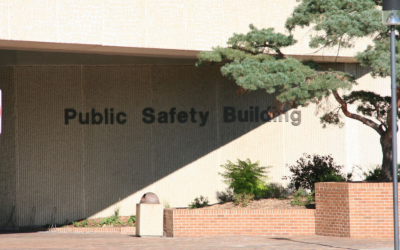Many large cities have been so successful in revitalizing downtown areas, it’s now extremely difficult to find parking, to secure restaurant reservations or lease retail space. People wait for years to lease condos in revitalized urban areas and real estate prices have increased significantly. In far too many other American cities, however, downtown areas are anything but vibrant. Some are eyesores because of vacated buildings and a few almost feel like ghost towns. When cities languish, municipal revenues become strained and the downward spiral escalates even more quickly.
The good news is that struggling cities are fighting back and change is occurring. Municipal leaders, with the help of planners, economic development experts and innovative thinkers, are initiating major upgrades to downtown areas and the results are outstanding. Revitalization efforts begin with an objective to make downtown areas, which were once the core of local business and citizen activity, the hot new place to be located. The task is rarely easy but it is definitely doable…it just takes vision and persistence.
Revitalization projects need funding, of course, so city leaders have become aggressive in finding new funding sources. Some are asking citizens to approve bond packages, others are securing federal or foundation grants and many are reaching out to form partnerships with private-sector firms. A few have even had good luck with crowdsourcing.

The objective, almost always, is to create a downtown environment that is enticing to retail, families, shoppers and visitors. Gyms, pharmacies, grocery stores and even schools are often offered incentives to establish themselves in urban settings. Amenities usually include green spaces, great wireless connection capabilities, outstanding public transportation, libraries, theaters, retail and healthcare clinics. The net effect on city revenues is huge. The economic stimulus drives up property values and the generation of sales taxes puts lots of additional funding into city coffers.
Houston’s recently announced “Plan Downtown” rebuilding initiative will cover two decades. The plan is based on long- and short-term planning, and the goal will be to create a downtown area that is a premier location for business and government and one that will represent the standard for urban livability. Downtown Houston may even become the new destination location for tourists and visitors.
Some of the most significant elements of Houston’s plan include flood resiliency strategies, a five-mile transit circuit, walkability improvements and the creation of an “Innovation District” to connect businesses and financiers with entrepreneurs. The plan also calls for construction of 12,000 new residential units and the use of autonomous vehicles.
Many cities throughout the U.S. are also into the redevelopment trend. Two cities were recently awarded grants for downtown development and revitalization planning. A $50,000 grant from MassDevelopment, the Massachusetts economic development and finance agency, has been awarded to the city of Taunton to develop a downtown district revitalization master plan. The city of Greeneville, Tennessee, has also received a $30,000 grant to develop a downtown revitalization plan. Input from citizens regarding amenities is being sought. Common requests include more parking spaces, additional green space, bicycle lanes and sidewalks.
Officials in the city of Watertown, New York, are encouraging suggestions for projects that could be a part of the city’s $10 million Downtown Revitalization Initiative. Some of the initial suggestions included a hockey training center, indoor tennis courts, swim facilities and renovation of existing, unused property for restaurants and small businesses.
A major downtown redevelopment plan in Richmond, Virginia, is likely to lead to replacement of the city’s nearly 50-year-old Richmond Coliseum. Plans include construction of a new hotel near the convention center and construction of affordable and mixed-income housing.
Two major revitalization projects on tap in Farmington, New Mexico, are expected to bring new life to the downtown area. Expansion of the city’s civic center will be completed at a cost of $11.5 million and another $9.4 million will be allocated for a Complete Streets Project. These projects are examples of projects that are included in the city’s master plan.
Revitalization projects like these are overdue. Cities, like all other public assets, need attention, maintenance and a shot of new blood on a regular basis. Funding that was once hard to find has become more available and collaborative efforts are allowing city leaders to create partnerships with private-sector firms that also have an interest in economic development. Along with seeking out new funding sources, many cities are also engaging in collaborative efforts through a revenue model called “asset recycling,” whereby non-revenue producing properties are swapped for either funding or development efforts. The success of these types of initiatives has been incredibly good.
Construction, engineering and professional firms, as well as landscape companies, telecommunications providers and technology firms, will find lots of new business opportunities in cities in 2018. It’s a good way to start a new year!
Since 1995, SPI’s procurement consulting services have helped companies of all sizes effectively navigate the various jurisdictions of government procurement. Contact them today to learn how they can help grow your business.






